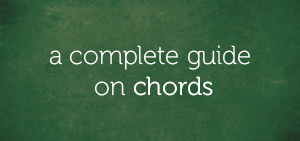If you’re interested in learning about the tetrachords of the major scale, then this lesson is for you.
There are certain aspects of the study of scales that require the knowledge of the tetrachord and that’s why we’re dedicating this lesson to the study of the concept of the tetrachord; especially for those who have no previous knowledge of the concept.
Let’s get started.
Overview Of The Concept Of Tetrachord
The term tetrachord literally means “four notes” and it is associated with traditional scales like the natural major scale, natural minor scale, harmonic minor scale, and the melodic minor scale.
So, the concept of the tetrachord associated with scales like the C major scale:
…which has eight notes: C, D, E, F, G, A, B and C.
In Greek, tetra means four and chord means string. So, literally speaking, the tetrachord means four notes to a string and here’s how it works…
On a string instrument like the violin, the notes of the C major scale:
…are played four notes to a string: the first four notes (which are C, D, E, and F):
…are played on a string and are classified as the lower tetrachord, while the last four notes (which are G, A, B, and C):
…are played on another string and are classified as the upper tetrachord.
So, the lower tetrachord:
…and upper tetrachord:
…altogether, produces the C major scale:
Consequently, the C major scale (just like any other traditional scale) can be broken down into tetrachords.
A Breakdown Of The Tetrachord
The intervallic formula of the tetrachord of the major scale is “whole-step, whole-step, half-step”, which can be represented as “W, W, H” or “Why Won’t He”.
So, starting from any note on the keyboard, and using the formula (W, W, H), the tetrachord can be formed. For example, starting from F:
F (W). A whole-step from F is G:
G (W). A whole-step from G is A:
A (H). A half-step from A is Bb:
Altogether, the F tetrachord consists of F, G, A, and Bb:
“Here Is The Tetrachord In All The Keys…”
C tetrachord:
Db tetrachord:
D tetrachord:
Eb tetrachord:
E tetrachord:
F tetrachord:
F# tetrachord:
G tetrachord:
Ab tetrachord:
A tetrachord:
Bb tetrachord:
B tetrachord:
The Relationship Between The Tetrachords Of The Major Scale
The tetrachords of the major scale are identical. The lower tetrachord of the C major scale:
…which consists of C, D, E, and F:
…is identical with the upper tetrachord of the C major scale (which consists of G, A, B, and C):
…in terms of the distance between the successive tones in the tetrachord.
“Here’s A Breakdown Of The Distance Between The Successive Notes Of The Upper And Lower Tetrachords…”
C to D is a whole-step and so is G to A
D to E is a whole-step and so is A to B
E to F is a half-step and so is B to C
The understanding of tetrachords can give you a new perspective to your major scale. So, if your have tetrachords covered on all the keys, then it’s easier to build major scales.
Due to the fact that the C tetrachord:
…and the G tetrachord:
…produces the C major scale:
…when played together, any other major scale can be understood as and associated with two tetrachords.
Final Words
The knowledge of the tetrachords of the major scale is invaluable in importance and I’m glad you can now look at any major scale and break it up into two identical tetrachords: the lower tetrachord and the upper tetrachord.
All the best!
Chuku Onyemachi
Latest posts by Chuku Onyemachi (see all)
- The Formation Of Diminished Seventh Chords Used To Be Challenging Until I Did This
- How To Form Seventh Chords In Two Shakes Of A Dog’s Tail Using Third Intervals And The Circle Of Fifths Chart
- I Played The 13sus4 Chord And This Happened…
- How To Build Seventh Chords Like An Architect Using “Foundation And Structure” Concept
- This 4-Week Plan Will Help You Master All The Major Scales







Comments on this entry are closed.